IUFRO Spotlight #43: Helping forests and people adapt to changing times and climes
The world’s forests seem beset on all sides.
Rising populations and improved incomes are increasing demands for forest products and services ranging from the traditional – food, fuel and timber – to more recently recognized needs such as biomass, bioenergy, nature conservation, recreation and health, as well as forest biodiversity conservation.
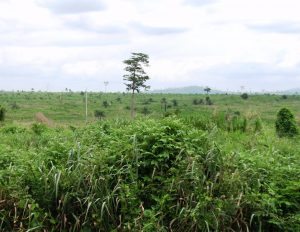
“It is a great challenge to restore forest landscape in largely deforested areas.” Photo: John Stanturf.
At the same time, those rising populations – and changing preferences, such as increased demand for meat and dairy products – lead to forests being cleared to free up land for agricultural and pasture purposes.
Add the other drivers of deforestation and forest degradation, plus increasing temperatures, rapidly altering precipitation patterns and the impacts of continuously growing carbon dioxide concentrations on forest vegetation photosynthesis; and then throw in more extreme weather events that lead to more frequent and intensified droughts and wildfires, the migration of tree pests and diseases – aided by globalization – and one has a global forest under siege. Read more…
IUFRO Spotlight #42 – Forest Education Changing to Reflect Times
As singer-songwriter – and recent Nobel Prize winner – Bob Dylan, once said: The times, they are a-changin’.
That’s certainly true in the forest sector where challenges such as globalization, climate change and societal demands have altered how we view, study and use the forest.
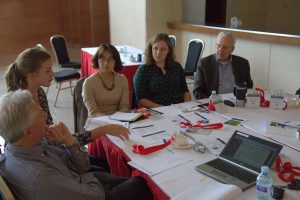
Team members meet to discuss the Global Outlook on Forest Education (GOFE), research project that is one of the Task Force’s major activities. Photo: Mika Rekola
As the forest industry changes to meet new and evolving demands, so too does the focus on forest education.
Forest studies that once concentrated primarily on wood as a resource are now a rarity. Environmental sciences, environmental management, land use, agroforestry and forest science, plus traditional forestry studies are all among today’s educational mix for those with an interest in the woods. Read more…
IUFRO Spotlight #41 – Sustainable Planted Forests to Meet Growing Global Needs

Plantation of Olga Bay Larch at Qingyuan in Liaoning Province, China. Plantations such as these will be an important source of roundwood in the future. (Photo by John Innes, Coordinator of IUFRO Task Force on Resources for the Future: Transformation in Forest Use)
The 2015 Global Forest Resources Assessments report from the UN Food and Agriculture Organization (FAO) noted that “…in planted forests, a new timber resource is continuing to be created … (that will) contribute significantly not only to future wood and energy supplies but … (also to) a range of wider social and environmental benefits…”
About 25 years ago, planted forests represented 4% of the world’s forested area. Today they represent almost 7%. But that 7% provides at least one-third of the world’s timber, so their importance should not be underestimated. Read more…
IUFROAO2016 – The Beijing Declaration
IUFRO Regional Congress for Asia and Oceania 2016
24 – 27 October 2016, Beijing, China
Forests for Sustainable Development: The Role of Research
The Beijing Declaration
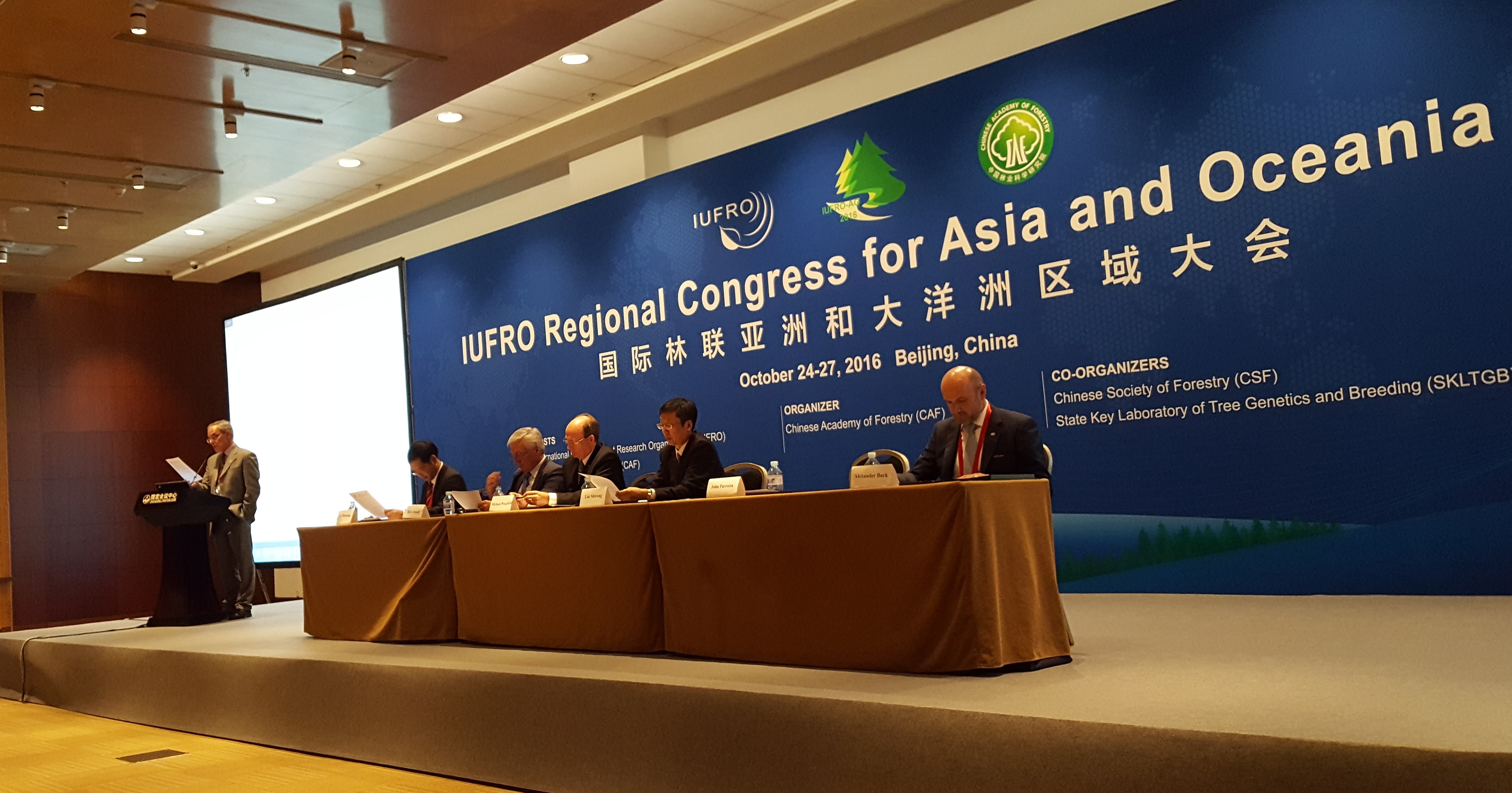
IUFRO Vice-President John Parrotta presenting the Beijing Declaration. Photo: Gerda Wolfrum, IUFRO Headquarters
Future for nature-based recreation and tourism
Session I-8B(85)
Moderator: Tuija Sievänen
Thursday, 27 October 2016, 10:30-12:30 (Room 307A)

Bench under a tree. Photo: all-free-download, George Hodan
This session highlighted future prospects of research in the field of nature-based recreation and tourism programs that aim to improve recreational activities and support the positive effects of green infrastructure on health and wellbeing.
A study from Finland showed how recent changes in tourism and recreation have been driven by factors such as population growth, increasing cultural diversity, changing leisure and working time, climate change, improved economy, technological changes, transport developments, decreasing environmental quality and emerging systems of policy and governance. It is important to better understand these continuing changes and be able to predict future demands and scenarios. Read more…
Forest Adaptation and Restoration under Global Change – Asian and Oceania Perspectives
Session A-9A (65): Forest Adaptation and Restoration under Global Change – Asian and Oceanian perspectives
27 October 2016, 13:30-15:30; Room 303A
Learn more about the IUFRO Task Force on “Forest Adaptation and Restoration under Global Change”: http://www.iufro.org/science/task-forces/forest-adaptation-restoration/
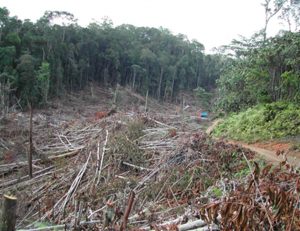 This session, organised by the IUFRO Task Force on “Forest Adaptation and Restoration under Global Change”, discussed various aspects of restoring forest ecosystems under conditions found in the Asia and Oceania regions.
This session, organised by the IUFRO Task Force on “Forest Adaptation and Restoration under Global Change”, discussed various aspects of restoring forest ecosystems under conditions found in the Asia and Oceania regions.
In the first presentation, John Stanturf (US Forest Service) explained the potential benefits that forest landscape restoration can have on mitigating as well as adapting to climate change. These included aspects such as diverse species and structures at stand scale; age classes of tree vegetation at landscape scale and connectivity. Read more…
Forests and the bioeconomy: challenges and opportunities

Elspeth MacRae delivering her keynote speech. Photo: Gerda Wolfrum, IUFRO Headquarters
Keynote speech by Elspeth MacRae, Scion, New Zealand
Read an interview with Dr. MacRae at: https://blog.iufro.org/2016/09/01/interview-with-dr-elspeth-macrae-scion-new-zealand/
Find biographic information at: http://www.iufro.org/events/congresses-regional/#c25751
The future holds tremendous challenges for the world with the increase in population probably being the largest one. As a consequence, we expect a need for a 70% increase in the amount of food available by 2050. The demographic changes and new lifestyles will put a growing pressure on the natural resources, exacerbate the effects of climate change, deplete soils and make water a scarce commodity, among other things. Read more…
Drawing on the past for a better understanding of the present and reliable predictions of the future
IUFRO AO 2016 Session Highlights: All-Division 8 Conference
D8-05 Session title: Using tree rings to study events and morphological changes: relevance, methods and recent advances in dendrogeomorphic research – RG 8.02 Forest Biodiversity
Organizer: Christoph Corona
Wednesday, 26 October 2016, Room 303B
Drawing on the past for a better understanding of the present and reliable predictions of the future
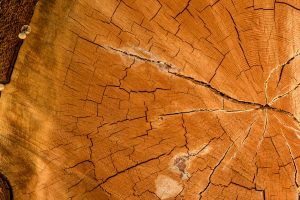
Tree rings. Photo: Geoff Roberts, USA.
Data on climate conditions of the past are vital for understanding present-day events triggered by climate change. This session looked at the two different fields, dendrochronology and landslide occurrence, on the common ground that they rely on such findings in order to shed light on factors contributing to adverse effects of climate change and to enable them to make predictions for the future. Read more…
Agroforestry – Tradition and Innovation
Session B-05 (26): Approaches for Sustaining Agroforestry Systems and Practice in Asia and Oceania
Moderator: Swoyambhu Man Amatya, Coordinator IUFRO Division 1.04.00, Ministry of Forests and Soil Conservation, Nepal
Wednesday, 26th of October 2016, 10:30-12:30 (301 B)
Find more information on the IUFRO Division 1.04.00 Agroforestry at:
http://www.iufro.org/science/divisions/division-1/10000/10400/
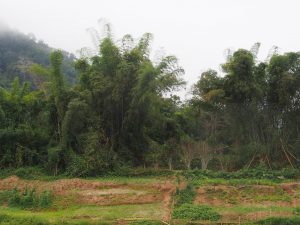
Agroforestry area in Laos. Photo: Renate Prüller, IUFRO Headquarters
While undernourishment decreased globally, agriculture has intensified. Agroforestry systems are believed to reduce negative impacts of farming, by enhancing ecosystem services without hindering the yield of farmers. This session explored agroforestry systems currently used in Asia and Oceania as well as the potential role of agroforestry in securing food, livelihoods and mitigation of climate change effects. Read more…
Forest transition pathways in Asia
Session F-05(60)
Moderator: Wil De Jong
Wednesday, 26 October 2016, 10:30-12:30 (Room 302B)
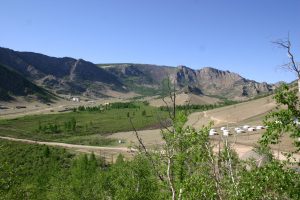
Terelj National Park, Mongolia. Photo: Alexander Buck, IUFRO Headquarters
Studies presented in this session examined the dynamic interrelationship between forest transition and economic, social and political changes, and discussed the implications for forest policy.
As we entered the Anthropocene, human influence became increasingly stronger causing great forest decline, particularly from 1920 onwards. Direct drivers of forest decrease include, among others, population growth and agricultural expansion. Read more…
